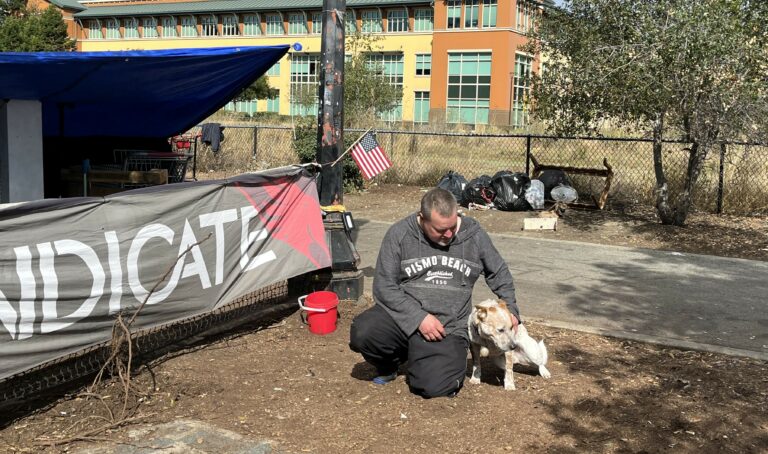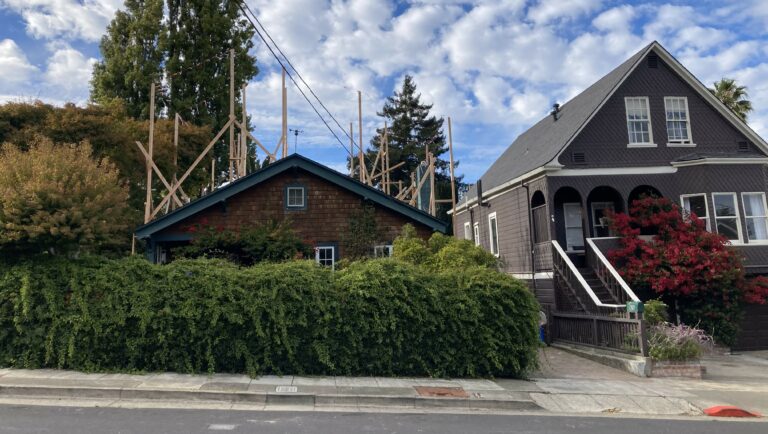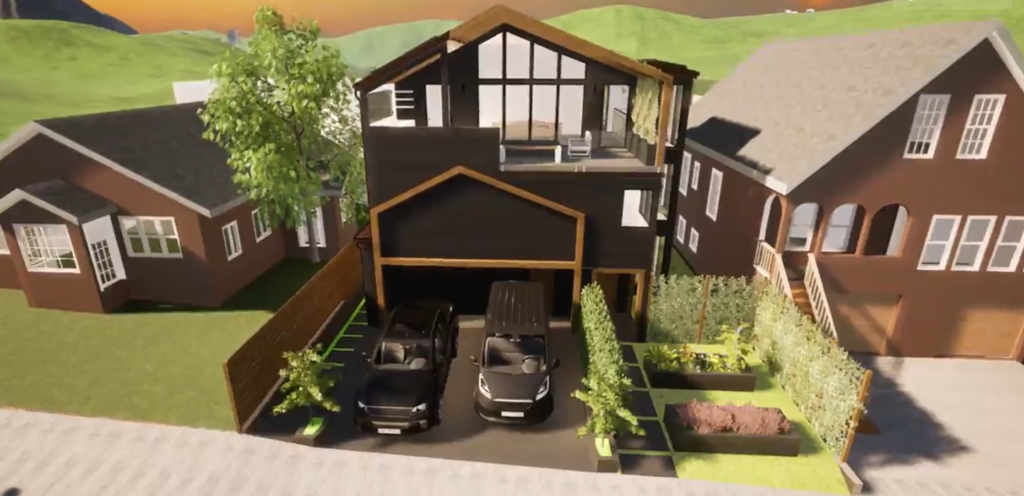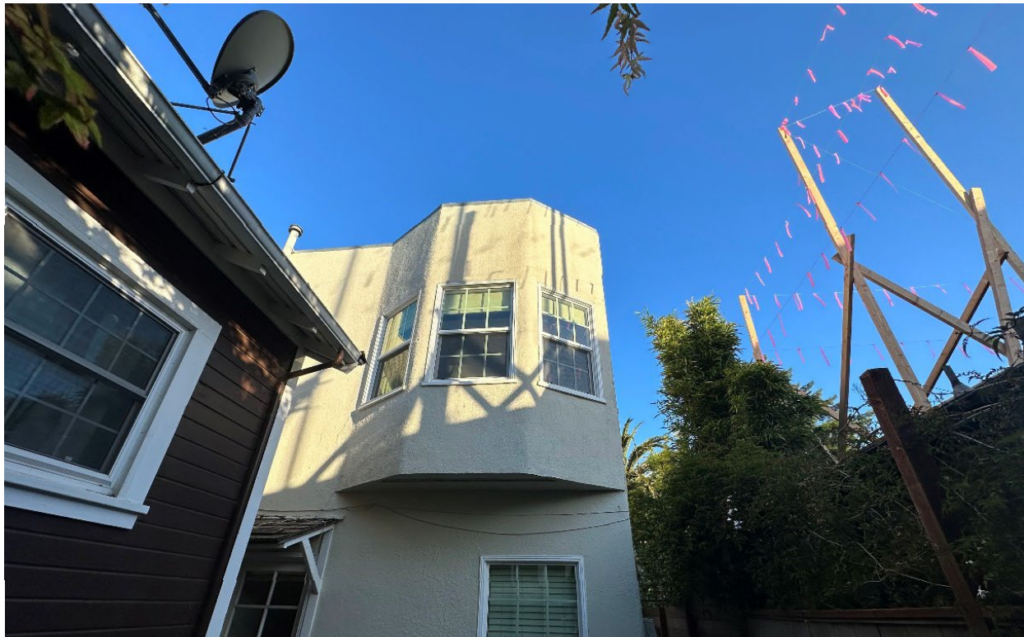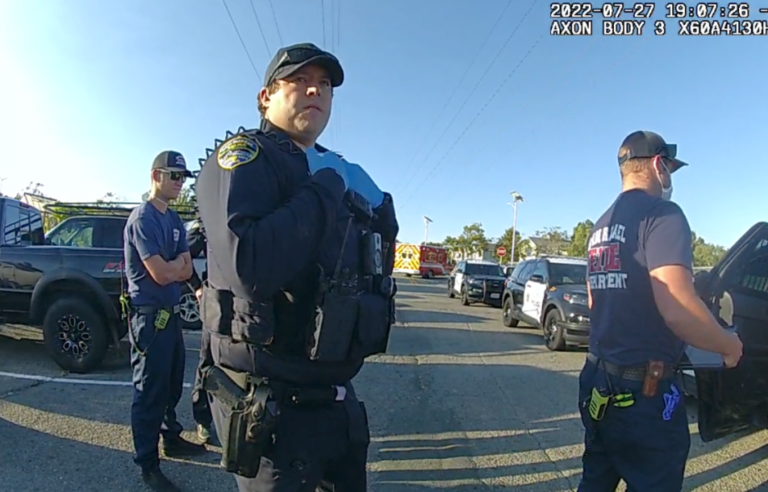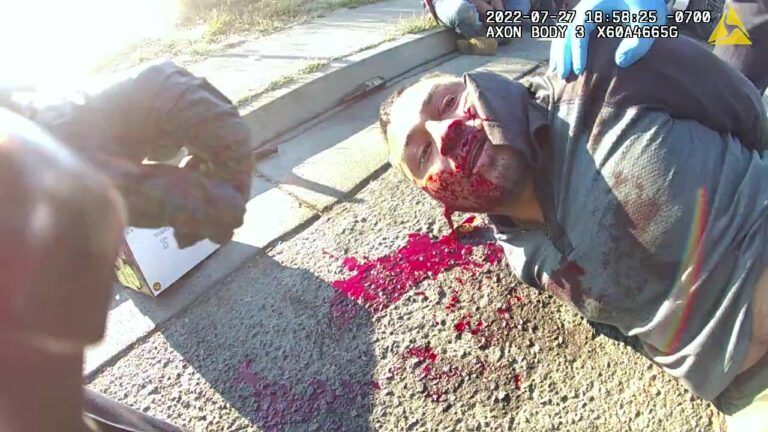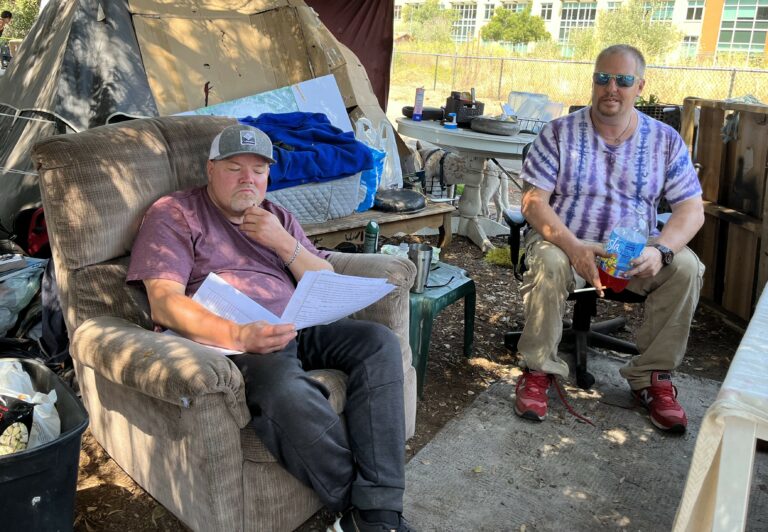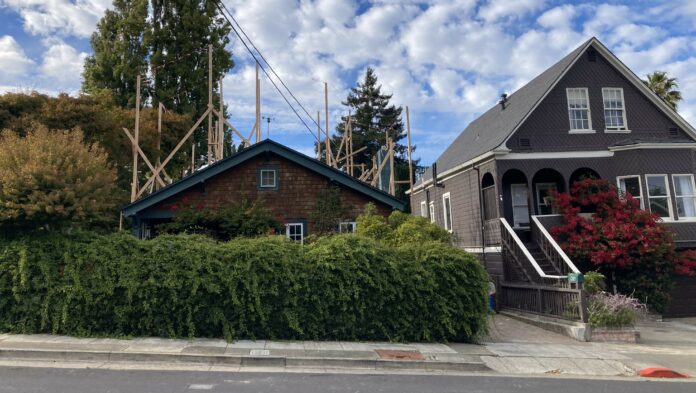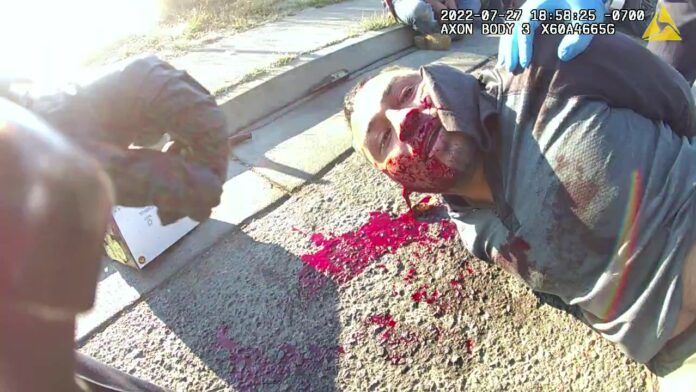Another lawsuit pitting homeless people against a city in wealthy Marin County is now in full swing. This time, San Rafael occupies the hot seat.
A recent order by a federal judge has substantially diminished the impact of San Rafael’s restrictive homeless camping ordinance. In addition, the city must perform administrative tasks that may be challenging for officials to manage with its current resources.
Homeless people and their advocates are praising the 50-page preliminary injunction, issued by Senior U.S. District Court Judge Edward Chen on Oct. 19, saying that it helps to ensure safety for campers.
“We’re pleased with the order overall,” Anthony Prince, the San Rafael Homeless Union attorney who is representing some of the plaintiffs in the lawsuit, said in an interview. “On balance, the city lost. They’re paying for their overreach and their apparent extremism.”
A group of homeless people living at Camp Integrity, an encampment on the Mahon Creek Path in San Rafael, filed the claim in August, after the city passed a controversial ordinance imposing severe limits on the size and number of campsites in an area. While homeless people maintain there is safety in numbers, city officials argue that large encampments pose health and safety risks because of increased crime, fires and garbage.
To help make their case, the homeless plaintiffs enlisted Jeffrey Schonberg, Ph.D., a researcher who focuses on the Bay Area’s homeless population. Schonberg submitted a report to the court stating that the ordinance is dangerous because it isolates homeless people.
Leaving women isolated significantly increases the risk of sexual assault, domestic violence and human trafficking, Schonberg said.
Drug overdose deaths will increase by 15% to 25% if the ordinance is enforced, because “one of the single largest risk factors of overdose is using in isolation,” Schonberg testified. And homeless people rely on one another for survival by exchanging favors and providing care for the more vulnerable campers, according to Schonberg.
Schonberg’s report appeared to sway the judge, but the homeless plaintiffs still didn’t get exactly what they wanted in the preliminary injunction. Neither did the city.
San Rafael had hoped the judge would lift—without restrictions—a previous order that prevents the city from enforcing the ordinance. The campers believed the best outcome would have completely blocked the ordinance, allowing the dozens of tents on the Mahon Creek Path to remain in place.
Instead, Chen’s preliminary injunction provides a compromise.
“The Court will lift the broad temporary restraining order and issue a narrowly tailored preliminary injunction which permits enforcement of the Ordinance under limited conditions, conditions which accommodate the competing interests of both parties while minimizing their respective hardships,” Chen wrote in the most recent order.
The city’s ordinance, passed in July but never implemented because of the court’s temporary restraining order, limited the size of a group campsite to 10 feet by 20 feet. It also required 200 feet of separation between campsites—the equivalent of two-thirds the length of a football field.
Chen’s preliminary injunction doubles the size of a group campsite to 400 square feet, with each site housing up to four people. The distance between campsites was reduced to 100 feet.
San Rafael Mayor Kate Colin believes the constraints in the original ordinance would have been more effective in “reducing violence,” citing incidents of stabbings, tent fires and drug arrests at the Mahon Creek Path encampment.
“Unfortunately, the judge’s order did not approve the ordinance as written, so I am not pleased with that,” Colin told the Pacific Sun.
The Mahon Creek Path encampment has continued to grow over the last several months. In July, there were approximately 33 tents. Currently, there are 61 tents, according to the city.
The encampment starts at the intersection of Lindaro Street and Anderson Avenue and ends at Lincoln Drive. The area measures about 540 feet in length. Even with the conditions Chen placed on the city’s ordinance, the majority of camp residents will need to relocate.
But San Rafael faces a few hurdles before the judge will lift the ban on the ordinance. First, the city must submit for the court’s review a street level map identifying permissible campsites by size and number of occupants. At each site, boundaries must be visibly designated.
The court must also review the city’s process for designating how campsites are allocated or claimed.
After the court permits San Rafael to implement the modified ordinance and oust many of the Mahon Creek Path residents, city officials will still have to jump through hoops. The city must provide moving assistance for campers required to relocate from Mahon Creek Path. Additionally, for campers whose tents and bedding won’t fit in the allotted space, the city must provide replacement gear.
Perhaps the most labor-intensive aspect of Chen’s requirements for San Rafael involves how the city must handle a homeless person’s request for reasonable accommodations based on a disability. The city can’t evict or prosecute a person making such a request, “unless and until it completes an interactive process (including administrative appeals) with that Plaintiff to address the need for reasonable accommodation,” according to the preliminary injunction.
It remains to be seen whether San Rafael has the administrative bandwidth to meet the requirements in Chen’s order.
“The city has received the judge’s lengthy order and is studying it carefully to determine next steps,” said Michael von Loewenfeldt, of Wagstaffe, von Loewenfeldt, Busch & Radwick, who is one of the attorneys representing San Rafael in the lawsuit.
It may benefit the city that the preliminary injunction applies only to residents of the Mahon Creek Path encampment who are named plaintiffs or belong to the San Rafael Homeless Union, narrowing the number of protected people. Homeless people living in other encampments throughout the city are not covered by Chen’s order.
But therein lies the rub for San Rafael. If the city begins enforcing the regulations in the original ordinance for other encampments, affected homeless residents are free to file a claim in federal court. And the Mahon Creek Path lawsuit serves as an easy blueprint to follow.
In the meantime, residents of the Mahon Creek Path encampment say the city has begun retaliating against them. Last week, Brian Nelson, one of the lawsuit’s named plaintiffs, received a notice from the city that the wood pallet foundation beneath his tent is unsafe and must be removed in 48 hours.
The pallets have been in place for eight months and prevent water from entering his tent, according to a letter that Prince, the San Rafael Homeless Union attorney, sent to von Loewenfeldt. The letter also warns that unless the city rescinds the notice, the matter will be reported to the court.
San Rafael and its homeless residents look like they’re following a playbook from a similar case in Sausalito. In February 2021, a group of homeless people sued Sausalito over an ordinance restricting homeless camping. The city responded by hiring expensive outside counsel to defend the lawsuit. The litigation dragged on for 18 months before the parties reached a settlement. All in, Sausalito spent approximately $2 million of taxpayer funds.
Surely, there must be a better way.
“It’s time for the city to deal with homelessness,” Prince said. “This lawsuit was brought by homeless people, and they now have a measure of protection from the court. These lawsuits are going to happen over and over again. I say the parties should sit down and settle by making policies that will keep homeless and housed people safe.”
Perhaps they can all discuss it in front of Chen at the status conference on Nov. 1.

